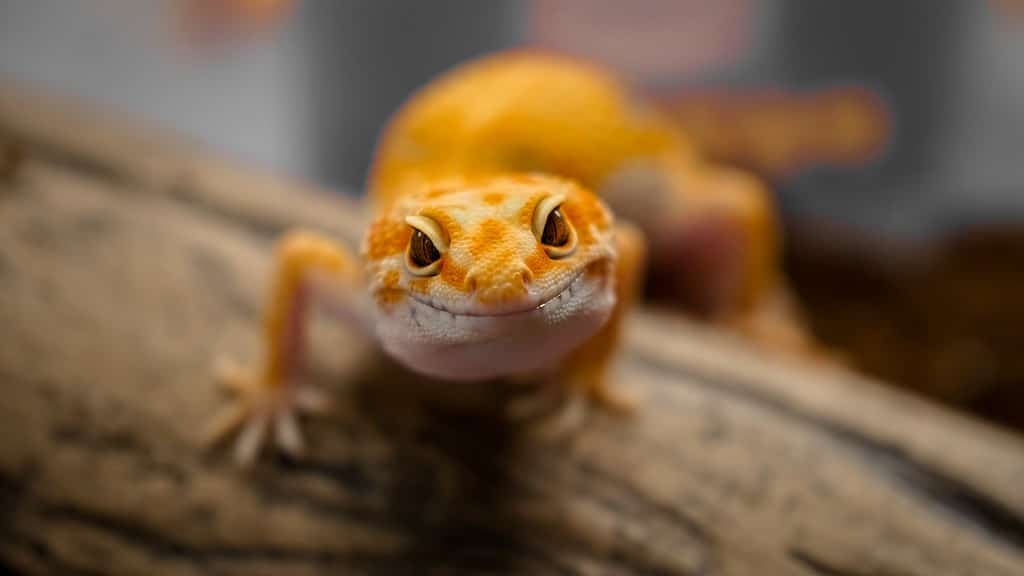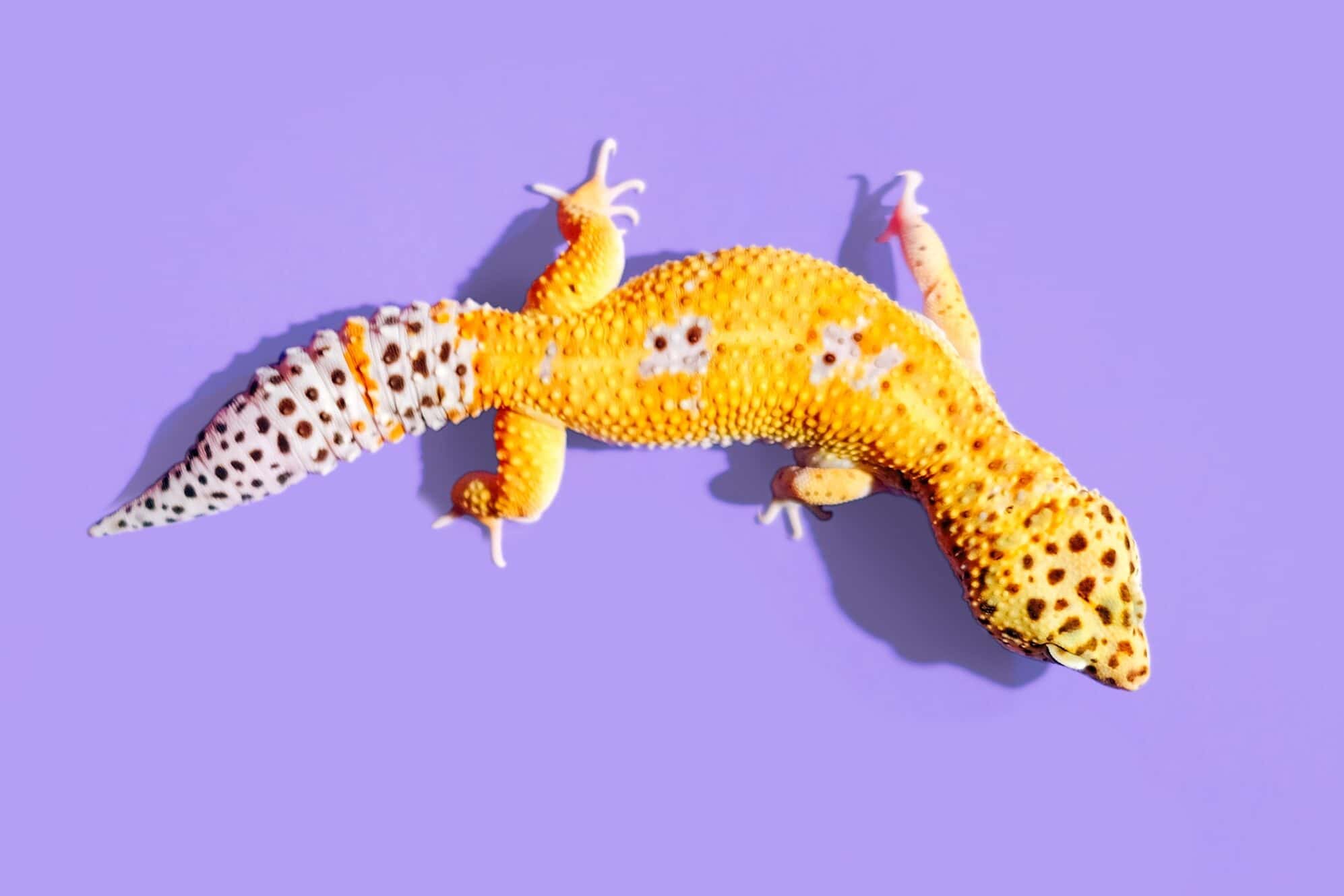Leopard Gecko owners are primarily concerned about their Geckos coloration. When compared to other lizards you may find you self wondering, Do Leopard geckos change color?

As a whole, Leopard geckos can change color based on factors like age, mood, health, and temperature. Changes can range from slight hue shifts to dramatic transformations, and some may develop brighter colors or patterns as they mature. However, not all geckos exhibit significant color changes.
Other Questions that come up are
Do leopard geckos lose their color?
On average, Leopard geckos don’t typically lose their color entirely, but can experience a loss of vibrancy or changes in hue due to aging, shedding, illness, stress, or environmental factors. Sudden or significant loss of color can indicate an underlying health issue that should be checked by a veterinarian.
It is not common for Leopard Geckos to lose their color entirely, but they can experience a loss of vibrancy or changes in hue over time. This can be due to a variety of factors, such as aging, shedding, illness, stress, or changes in their environment.
For example, as Leopard Geckos age, their colors may become less bright and intense. Additionally, they may lose some coloration during the shedding process, which is a natural process in which they shed their old skin to make way for new growth.
Stress and illness can also affect a Leopard Gecko’s coloration, causing them to become dull or faded. In some cases, changes in diet or environmental factors like lighting or temperature can also impact their coloration.
Reasons why Leopard Gecko change their color
Improper Nutrition
In leopard geckos, a change in color or darkening of the skin may also be caused by a lack of proper nutrition. They require many vitamins, including calcium and vitamin D3. Discoloration of the skin color is one of the potential side effects of calcium insufficiency. If you become aware of this, you need to handle it as soon as possible.
Vitamin D3 may be obtained by leopard geckos either by the UV light that is placed in their enclosure or through the food that they consume. In most cases, getting the necessary nutrients through one’s food rather than via a UV light is advised as the best course of action.
It is suggested that either a heating mat placed underneath the terrarium or a heat lamp placed on the lid be used to provide the necessary warmth. You have to give them gut-loaded feeder insects that have been powdered with supplements if you want them to have enough vitamin D3, vitamin pills, and minerals in their diet.
To lower the possibility of a calcium deficit developing, some calcium powder should be sprinkled into the tank for Leos to lick. Calcium powders are readily available on the market, or you may create your own at home using some common ingredients.
Unbalanced Temperature
It’s possible that your leopard gecko is changing color because it’s too chilly in either the tank or outside of it. The process of browning and eventually turning black improves the absorption of heat. So, in a color environment, Leos may change their color.
Ensure that the vivarium in which your leopard gecko resides maintains temperatures that are just right. During the day, the temperature on the warmer side should be between 82 and 92 degrees Fahrenheit, while the temperature on the cooler side should be between 72 and 78 degrees Fahrenheit.
A temperature difference in the tank, in which one side should be warm, and the other side should be chilly, is another factor that should not be overlooked. Your leopard gecko will be able to go to a warmer location in order to warm up as a result of this.
Be careful you hang two digital thermometers somewhere on the wall of the tank, one on the warm side and one on the cool side. Because your Leo needs to warm its tummy in order to digest food, it is essential to monitor the temperatures near the floor of its enclosure.
If your leopard gecko needs to avoid the light, you should make sure to arrange a warm refuge in close proximity to the basking lights.
Leopard geckos often display their most vibrant color as their body temperature rises. It is also possible for it to darken if the environment in the tank is excessively humid or if your leopard gecko spends a lot of time in its hide.
Shedding
It’s possible that your leopard gecko is going through a color change process before shedding. Geckos of this species lose their skin reasonably often, on average, once every two to four weeks. Before losing their skin, leopard geckos can take on a grayish hue.
This is entirely natural and should go away after the shedding process has been completed. Even if your Leo has never been this black prior to shedding in the past, you shouldn’t be concerned about it now.
Because it is now dark, it may take anywhere from five to seven days for your Leo to finish shedding completely. If your Leo does not return to its usual state during the shedding process, there may be another cause for this.
Stress
When under stress, leos may occasionally appear darker and show color variation. A multitude of factors, including inadequate temperatures, lighting, feeding, substrate, tank sizes, interaction, and so on, may all contribute to an animal’s state of stress. Investigate what could be going wrong in order to correct the situation.
Make certain that there is a temperature difference, that the temperatures are excellent both during the day & night, in both the chilly and the warm places, and that there are optimum temperatures. When night falls, be sure the lights you use won’t wake up your leopard gecko while it’s sleeping. Because leopard geckos are capable of seeing colors, a white, red, or blue light bulb is not the ideal option.
It is not always required to use bulbs since the temperature in the terrarium should drop when the lights are turned off. You may also heat the tank at night with a heating pad placed underneath the tank rather than using lamps.
Place the mat on one side of the tank to create a temperature gradient, ensuring that the mat does not exceed thirty percent of the total size of the tank. Even if the temperature in the cold location is too high, your leopard gecko may still change color and become brown.
If adequate amounts of vitamin D3 are given, leopard geckos often do not require exposure to UVB rays.
Your Leo is Turning Into an Adult!
True to its name, a young leopard gecko will eventually change its color as it matures. As a result of this, a darkening of the skin to some degree is to be anticipated. If your Leo is around a year old, this might very possibly be the cause of the change in the color of its skin that you have seen.
You shouldn’t be concerned if your Leo has bands and is getting darker overall. It’s a natural part of growing up! In addition, once they have reached their full maturity, several kinds of leos have a darker colour.

What must you do during your Gecko’s color-changing process?
The best thing to do when you observe that your Gecko’s color is shifting to a whitish-gray hue is to build a separate tank/terrarium for your Gecko. To aid in the process of shedding its skin, your Gecko adores a hiding spot that is both dark and wet. It is highly recommended that the substrate for the hide be made of damp peat moss or pine mulch.
As soon as you offer this, your Gecko will be able to tear their skin away from their body with ease using their teeth and will even be able to consume it. On the other hand, your leopard gecko may experience difficulties in shedding areas of its skin at specific points in its life. When this occurs, you will need to assist your Gecko in removing the shed that has been lodged.
